Apples are one of the most versatile and widely consumed fruits in the world. From the tart bite of a Granny Smith to the honeyed sweetness of a Fuji, apples come in an array of flavors, textures, and colors. Grocery stores typically stock a variety of apple types, each with its own unique characteristics, making them suited to different culinary uses. Whether you’re making a pie, juicing, or simply looking for a crisp snack, understanding the differences between common apple varieties can help you choose the best one for your needs.
Let’s explore some of the most common apples found in grocery stores and highlight their best uses, from baking to snacking and beyond.
Gala Apples
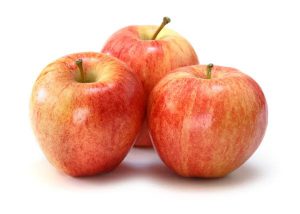 Flavor Profile:
Flavor Profile:
Gala apples are known for their mild, sweet flavor with a hint of vanilla and floral undertones. They are a smaller apple with a thin skin, making them easy to bite into, and their flesh is crisp and juicy but not overly firm.
Best Uses:
– Snacking: Gala apples are perfect for snacking due to their sweetness and tender texture.
– Salads: The mild sweetness of Gala apples complements greens, cheese, and nuts in salads.
– Sauces: They make excellent applesauce because they break down easily and don’t require much added sugar.
Not ideal for: Baking, as their flesh tends to become too soft when cooked, making them less suited for pies or tarts.
Granny Smith Apples
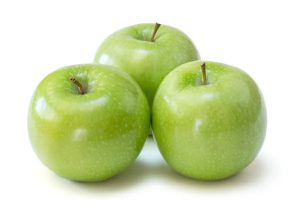 Flavor Profile:
Flavor Profile:
Granny Smith apples are famously tart with a bright, zesty flavor. They have a firm, crisp texture and a vibrant green skin that sets them apart from other varieties.
Best Uses:
– Baking: Granny Smith apples hold their shape well when baked, making them a classic choice for pies, tarts, and crumbles.
– Salads: Their tartness adds a refreshing contrast to sweeter salad ingredients.
– Juicing and Cider: The sharp flavor of Granny Smith apples makes them ideal for juicing or adding balance to apple ciders and blends.
Not ideal for: Snacking, unless you prefer a more tart apple.
Honeycrisp Apples
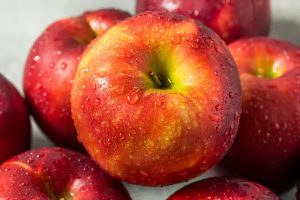 Flavor Profile:
Flavor Profile:
As the name suggests, Honeycrisp apples are both sweet and crisp. They have a perfect balance of sweetness and acidity, making them one of the most popular apples in the market.
Best Uses:
– Snacking: Their satisfying crunch and balanced flavor make Honeycrisp apples an excellent snack choice.
– Salads: Honeycrisps add both texture and sweetness to salads, holding their crunch for longer periods compared to other varieties.
– Juicing: Their sweetness and high water content make them great for juicing, yielding a naturally sweet and refreshing juice.
Not ideal for: Baking, because they can lose their crunch when exposed to prolonged heat.
Fuji Apples
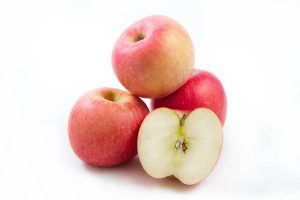 Flavor Profile:
Flavor Profile:
Fuji apples are one of the sweetest varieties, with a sugary flavor reminiscent of honey. They are exceptionally juicy and have a dense, crisp texture. These apples are larger than most other types, with a yellow-green skin streaked with red.
Best Uses:
– Snacking: Their sweetness and juiciness make Fuji apples a favorite for eating raw.
– Salads: Fuji apples add sweetness and crunch to salads without becoming too soft.
– Sauces and Juices: Their high sugar content makes them excellent for sweet apple sauces and juices.
Not ideal for: Baking, as their high water content can make them too soft and watery in pies or tarts.
Red Delicious Apples
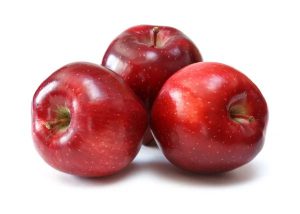 Flavor Profile:
Flavor Profile:
Red Delicious apples are mildly sweet with a slightly floral, almost melon-like flavor. They have a thick, deep red skin and a soft, sometimes grainy texture, which isn’t as crisp as other varieties.
Best Uses:
– Snacking: If you enjoy a mild, soft apple, Red Delicious can be a good option for eating out of hand.
– Salads: When sliced, Red Delicious apples add a mild sweetness and vibrant color to salads. However, they tend to oxidize quickly, so it’s best to toss them in lemon juice to prevent browning.
– Smoothies: The soft texture of Red Delicious apples makes them easy to blend into smoothies.
Not ideal for: Baking or cooking, as they tend to lose both flavor and texture when heated.
Golden Delicious Apples
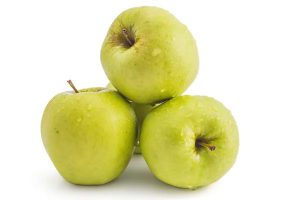 Flavor Profile:
Flavor Profile:
Golden Delicious apples have a balanced sweet-tart flavor with notes of honey and pear. Their thin skin is golden yellow, and their flesh is tender and juicy, though not as crisp as varieties like Honeycrisp or Fuji.
Best Uses:
– Baking: Golden Delicious apples are great for baking as they hold their shape well in pies, tarts, and crisps, without turning mushy.
– Salads: Their sweetness and slightly softer texture make them a nice addition to fruit salads or green salads.
– Sauces and Preserves: Golden Delicious apples break down easily when cooked, making them ideal for applesauce, jams, and preserves.
Not ideal for: Snacking if you prefer a crisper apple.
Pink Lady (Cripps Pink) Apples
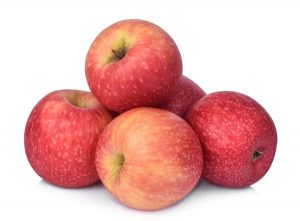 Flavor Profile:
Flavor Profile:
Pink Lady apples are known for their tart-sweet balance, with a bright, tangy flavor that finishes with a hint of sweetness. They are crisp, firm, and juicy, with a pinkish-red blush over a yellow-green skin.
Best Uses:
– Snacking: The crisp texture and complex flavor make Pink Lady apples an excellent choice for eating fresh.
– Salads: Their firm flesh holds up well in salads, and their tartness balances sweet ingredients like dried fruit or candied nuts.
– Baking: Pink Lady apples are versatile enough for baking, holding their shape and offering a pleasant balance of flavors in pies and tarts.
Not ideal for: Sauces, as their firmer texture doesn’t break down as easily as other varieties.
Braeburn Apples
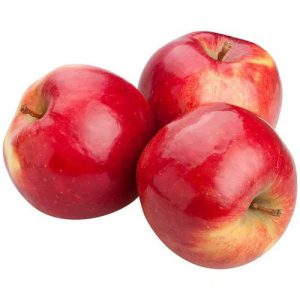 Flavor Profile:
Flavor Profile:
Braeburn apples have a spicy-sweet flavor with hints of cinnamon and nutmeg, paired with a refreshing tartness. They have a firm, crisp texture and an orange-red skin with a yellow undertone.
Best Uses:
– Baking: Braeburn apples are fantastic for baking because they hold their shape and their spicy-sweet flavor becomes more pronounced when cooked.
– Snacking: Their crisp texture and unique flavor make Braeburn apples a delicious choice for snacking.
– Salads: The firm texture of Braeburn apples means they won’t turn mushy in salads, and their spiced flavor adds depth to fresh dishes.
Not ideal for: Juicing, as their denser texture can make them harder to juice compared to juicier varieties.
McIntosh Apples
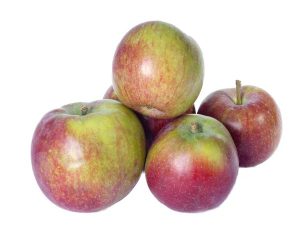 Flavor Profile:
Flavor Profile:
McIntosh apples are soft, juicy, and aromatic, with a tangy-sweet flavor that mellows as the fruit ripens. They have a tender, thin skin that is typically red with green accents.
Best Uses:
– Sauces and Preserves: McIntosh apples break down easily, making them ideal for applesauce, jams, and other cooked apple preparations.
– Juicing: Their high juice content and sweet flavor make McIntosh apples a popular choice for apple juice or cider.
– Snacking: If you enjoy a softer apple, McIntosh apples are perfect for eating out of hand.
Not ideal for: Baking, as they tend to lose their structure and become mushy when heated.
Jonagold Apples
Flavor Profile:
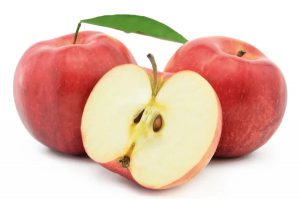 A cross between Jonathan and Golden Delicious apples, Jonagold apples have a sweet-tart flavor with a honeyed aftertaste. They are crisp, with a creamy, juicy flesh and a yellow-orange skin streaked with red.
A cross between Jonathan and Golden Delicious apples, Jonagold apples have a sweet-tart flavor with a honeyed aftertaste. They are crisp, with a creamy, juicy flesh and a yellow-orange skin streaked with red.
Best Uses:
– Baking: Jonagold apples are great for baking, offering the perfect balance of sweetness and tartness without losing their shape in pies, tarts, or crisps.
– Snacking: Their juicy, crisp texture makes Jonagold apples a good choice for snacking.
– Salads: The firm texture of Jonagold apples makes them a great addition to salads, offering both crunch and flavor.
Not ideal for: Sauces, as their firmer texture can take longer to break down.
With so many varieties of apples available, it can be tricky to know which one to choose for your specific culinary needs. Some apples are better for snacking, others shine in baked goods, and still others are perfect for sauces or salads. By understanding the flavor profiles and best uses of common grocery store apples, you can ensure that your dishes always turn out just right.
Next time you’re at the grocery store, consider picking up a few different varieties of apples to explore their unique flavors and textures. Whether you’re making an apple pie, tossing together a salad, or simply enjoying a fresh snack, there’s an apple variety out there to suit your taste and needs.
Bill Rice is Founder and Co-Publisher of the Great Family Cookbook Project, a website that helps families and individuals collect, preserve and share food memories by creating their own printed personal cookbooks. He is the author of The Wellfleet Oyster Cookbook and the Cape Cod Cocktail Cookbook (Available on Amazon), both created using FamilyCookbookProject.com. He is also editor of the Donovan Family Cookbook, now it’s third printing and is an avid genealogist tracing his family back to the 1600’s.
Follow Family Cookbook Project on Facebook, Instagram, Twitter TikTok, YouTube and Pinterest!


